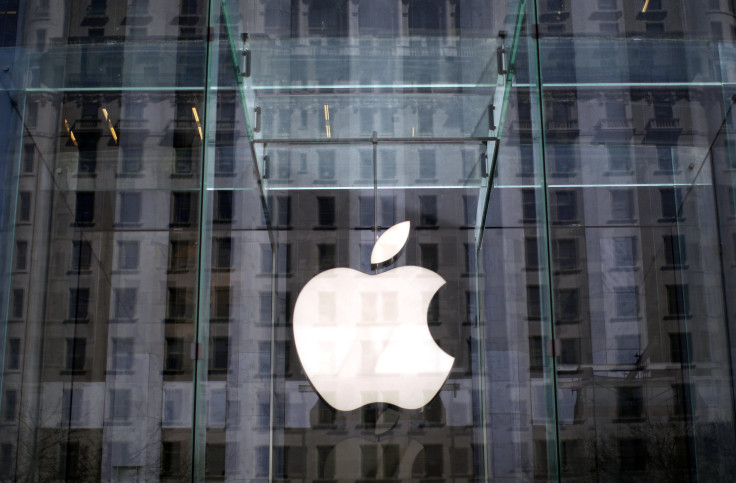Apple Year-End Review: The Phone, The Pad, The Computers; How Upgrades Dominated 2013

2013 has been a banner year for Apple. While it’s true that Apple announced zero new devices, the upgrades it launched for its current line were pretty significant. We also saw Apple’s prices fall on some of the notable lines. The Macbook Air line’s price fell to an absolutely affordable level at $999, while the Macbook Pro dropped to $1,199; the Macbook Pro Retina, $100 more. Based on how Apple aligned itself this year (synchronizing its Mac line with the Haswell processors, pushing Retina displays on all portable devices), 2014 should see some big announcements, most notably a rumored early iPhone 6 launch. Here's a roundup of what you may have missed in 2013.
iPhone
September saw the announcement and launch of the incremental update of the iPhone called the iPhone 5s, an inline upgrade of the previous year’s model. Notable features included a faster processor (still the A7 chip but instead in a 64-bit version), a better rear camera with a 5-element lens, a massive f2.2 aperture, new flash capable of better color correction and light adjustment, and a flurry of new photo modes like slow motion and burst capabilities. While most of these were straight upgrades, the most novel feature was the fingerprint sensor and the inclusion of the “Touch ID” system. Replacing the passcode and password features, Touch ID can be used to unlock the device and authorize app store purchases via scanning the sub-epidermal layer of your finger.
A second device was also announced in September, the iPhone 5c. Lacking all of the updates the 5s possesses, the 5c is internally the same as the previous iPhone 5. However, externally the iPhone 5c has a hard-shell plastic case that comes in 5 different colors.
iPad
Just like in 2012, Apple released the updated iPad series late in the year. November saw both the iPad Mini’s update as well as the redesigned iPad, now called the iPad Air. The iPad Air, Apple’s fifth-generation iPad, wasn’t much of a spec update. While it had the same updated 64-bit A7 chip that the iPhone 5s saw, the biggest improvement (or perhaps the smallest) was the iPad Air’s lighter design. The bezel is smaller, the case is thinner, and the overall weight is nearly half a pound lighter, coming in at an incredible 1 pound. Boasting the lightest design yet, the iPad Air can easily be carried anywhere.
Speaking of portability, just two weeks after the iPad Air’s release, the redesigned iPad Mini launched. This was probably the most updated portable that Apple announced this year. The iPad Mini now rocks a retina display and is the best one yet. With a pixel density of 324 ppi, the iPad Mini has the same retina density as the iPhone and iPod Touch lines, making it the best screen for its size in Apple’s lineup. However, the good comes with the bad on this device as the starting price jumped up $100 to $399 for the 16GB version.
Mac/book
Apple’s notebook line of computers got incremental updates as well, all which lead to improved battery life and power consumption. The Macbook Pro and Air saw the adoption of Intel’s newest power conservative CPU, the Haswell processor; the Macbook Pro 15 inch was updated with a slightly varied Haswell chip called the Crystal Well processor. Overall battery lives improved by an hour or more, falling in the range of eight to nine hours of battery life for the MBPs and between nine to 12 hours for the MB Air. The Macbook Pro line also got a graphics card update to the new Intel Iris chip, giving an increase of 90 percent faster performance according to some benchmark tests.
The Mac Pro, Apple’s desktop computer, got a complete overhaul. A new sleek black case reminiscent of a high end subwoofer or a modern designed trashcan (possibly depending on your view of Apple) houses the most powerful system to date. Containing the extremely powerful Intel Ivy Bridge E Xeon processor (up to 12 cores), two AMD FirePro graphics chips, six Thunderbolt 2 ports (imagine the possible desktop setups), HDMI, USB 3.0, 802.11ac wireless networking, and Bluetooth 4.0. The power this thing possesses is remarkable. The FirePros will be able to power up to three 4k displays!
The most radical-looking desktop from Apple is designed around the same principle as a chef’s hat. Aimed on improving processing speed by reducing heat, the cylindrical design pushes heat into the center chamber where a powerful fan vents it vertically. This brings the overall temperature down, creating a very efficient machine.
Software
With all of the updates in 2013, iOS 7 was the big star this year for Apple. A revamp of the iOS Apple fanboys have come to love, iOS 7 had over 200 million devices within five days of launch. However, some have said the new version of the portable OS runs slowly on older devices. Visual changes included animated magnification of app launching and closing, active backgrounds, and better graphics for retina displays.
Mavericks, OSX 10.9, is aimed at improving battery life for all, including features like better improvements for multi-monitor displays and removing features found in Mountain Lion that hindered processing power. Apps like iBooks and Maps were included to make a more seamless environment between iOS and OSX, solidifying consumers into the Apple brand. The push to integrate iOS into the desktop was an important move. Redesigns of long standing apps like Calendar and Safari mirror those seen on iOS 7. Although, Mavericks didn’t see the overall redesign that iOS 7 brought to mobile devices, it is still a “must upgrade” as it is free for all users.
© Copyright IBTimes 2025. All rights reserved.





















